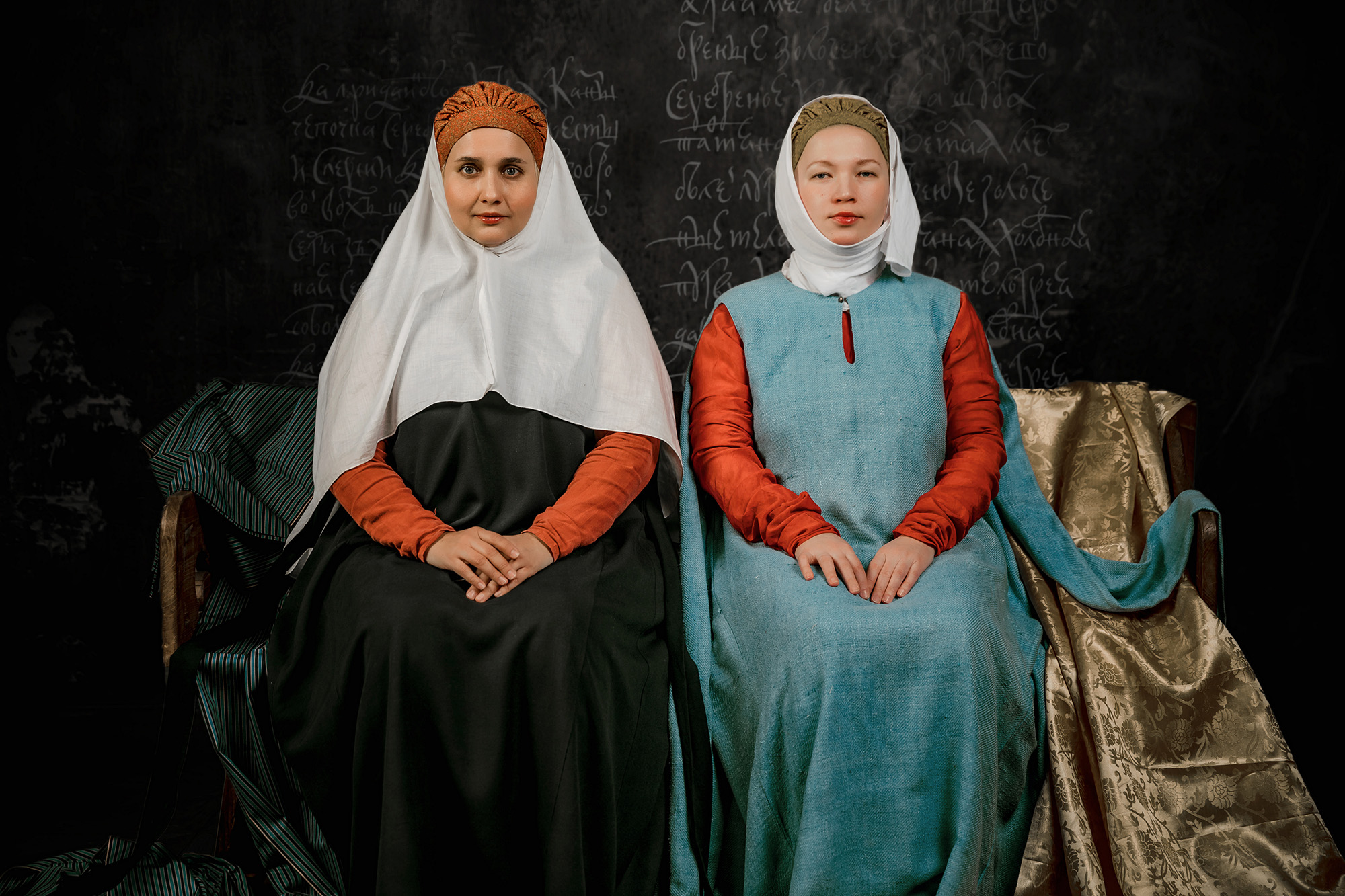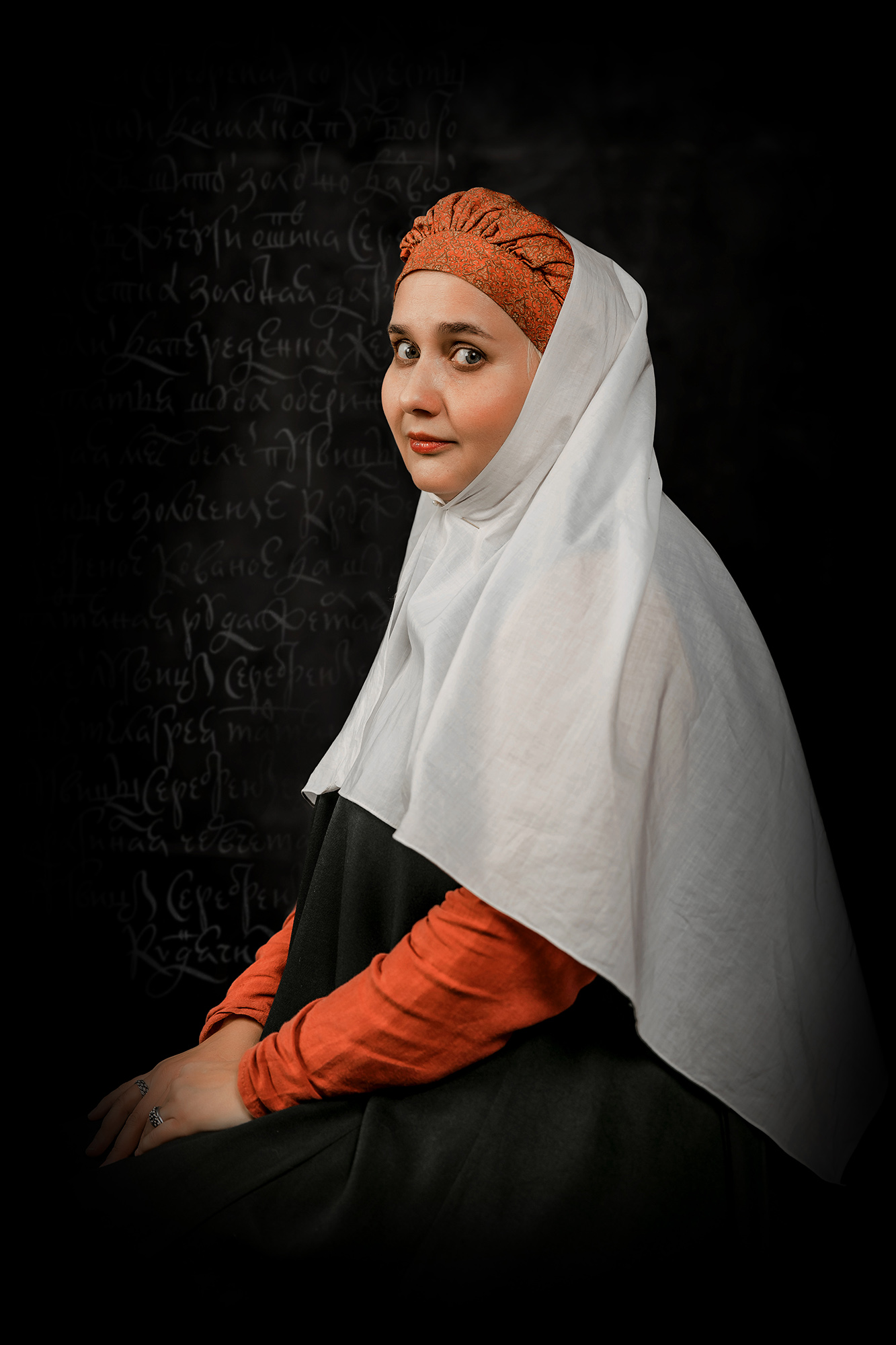
Following historical technologies, masters will recreate ancient bride's costume in ten days.

It will be a bold historical experiment - a group of artisans will create an accurate reconstruction of the 17th century girl’s wedding costume in ten days of continuous work.
They are to work with authentic tools, following historical technologies. Masters will find themselves in the work atmosphere of the 17th century chambers, where their colleagues laboured for Moscow nobility 300 years ago.
Every member of the project has great experience in the study and reconstruction of historical costumes. However they will work for the first time in such an environment
History, fashion, and contemporary art intertwine in the project. This is experiment and performance, creative collaboration and ode to craft.

The bride’s costume consists of 8 items.
It is also complemented with accessories and fittings. Almost all of it will be made during the project. We order reproductions of historical fabrics and materials abroad - original fabrics came to Russia in the 17th century the same way.

«Our workshop has been creating costumes for historical projects for 5 years. For festivals, living history parks, and photoshoots, historical hiking, and archaeological experiments. We made the events brighter staying behind the scenes. «Svadebka» project opens the curtain and brings us closer to people who most often see the final product. The experiment not only reveals the reconstruction of the seventeenth-century female costume. It also shows that the process of creating a costume itself can be studied, and that we can observe craft turning into art».
author of the project
The project was prepared in collaboration with masters from other Russian cities. Many of them had to deal not only with rare ancient crafts but also with researches on the history of costume.

Chief tailor
Tailors
Embroiderer
Master of shoes
Jeweler
Storytellers
Leonevskaya Nastya
Author, presenter of the project, and workshop leader.
Recreated the Venets.
Tarasevich Marina
Chief tailor of the project
Fashion-designer
Over 30 years in the profession
Has been sewing since the fourth grade at school
Worked in fashion fur industry for 9 years
Worked in Vyacheslav Zaitsev Fashion House for 16 years
Sigailova Natalya
Sews the Rubashka for the project
18 years in the profession
Worked in costume warehouse at the «Gorky film studio» and as fashion designer in an atelier
Worked as costume designer in «Eralash» for 8 years
Sankova Ksenia
Makes the Ohaben’ for the project
6th grade tailor for women’s outerwear
27 years in the profession
Worked for the Moscow art production «Rosgosсirk» for 19 years
6 years in the Circus of the Zapashny brothers
Sidorova Irina
Sews the Shuba for the project
She learned the craft of sewing from a tailor-grandmother
30 years in the profession
Sewed everything, from accessories and clothes to upholstery for furniture
Larionova Julia
Makes embroidery of the bride’s Tufli for the project
Multi-skilled artist and craftsperson
She has been creating costumes since childhood
She began making historical replicas 7 years ago
Explores women’s wardrobe of past epochs
Kuznetsov Ilya
Narrator of the project
20 years of working with leather items
Craftsman and designer at «Finecrafts» workshop, where high-quality and historically authentic shoes, bags, gloves, and belts are recreated.
Original materials and correct technologies, tools and fixtures are extremely important for the workshop.
In 2011, in England, he studied one-to-one with the famous master of historical shoes Sarah Juniper.
Ismailov Max
Makes the Tufli under guidance of Ilya Kuznetsov for the project
Craftsman by a vocation
Apprentice at «Finecrafts» workshop
He has been participating in historical reconstruction since the age of 15
Efremenkova Julia
Makes the Kosnik - gold decoration for cornrow; weaves buttons of metalized threads and a braid for the Shuba
Expert of every thread technique, including the unique sprang-technique, tablet weaving and weaving on weaving reed, etc.
Self-taught, studies the technology of ancient crafts
Has been engaged in historical reconstruction of Russian costume for 15 years
Vdonina Nadejda
Narrator-master, responsible for making dowry for the project
Has fulfilled orders for historical costumes for 7 years
In addition to cutting and sewing, knits with a needle, spins, weaves at a vertical loom, tablets, berdo; makes laces on a lucet, fingerloop; colors with natural dyes.
Holds masterclasses in crafts
Participates in many projects of our workshop
Shestak Svetlana
Master of making dowry for the project
Carpet weaving artist-master
Self-taught tailor
24 years in the profession
For 12 years she worked as an artist of metalwork and designer at the blacksmith company «Svarog Art».
Holds masterclasses in carpet weaving at the workshop «Red Fox»
Learned to weave in the workshop «Pro Sundress»
We learned previously unknown decorating techniques and the complicated technique of gold embroidery from the latest research by historian Yelkina Irina. With this knowledge, we can make our wedding costume more detailed, and the manufacturing technology - as historically authentic as possible.
Sources we used: marriage records of the 17th century and the inventory of royal property, archaeological finds, preserved artifacts from the epoch of Muscovite Russia; notes of travelers depicting life and clothes in Muscovy.

We used the following materials:
While artisans are preparing the wedding costume guests will help collect the dowry - to fill the trunk with handmade scarves-shirinkas*.
The variety of ways to decorate this accessory of the 17th century allows everyone to reveal their imagination and skills. There is a special working area for needlework in the workshop. Experienced artisans will help guests.
When finished, the wedding costume will be presented at the exhibition of the project. There will be a list of all artisans, guests and other participants who contributed to creation of the dowry.
* In the 17th century, «shirinka» was the name for square scarf, often decorated with gold or silk embroidery, «forged» lace, fringe, and pearls. «Shirinka» got its name, probably due to the width (rus. «shirina») of the piece of fabric which was cut to make a scarf.